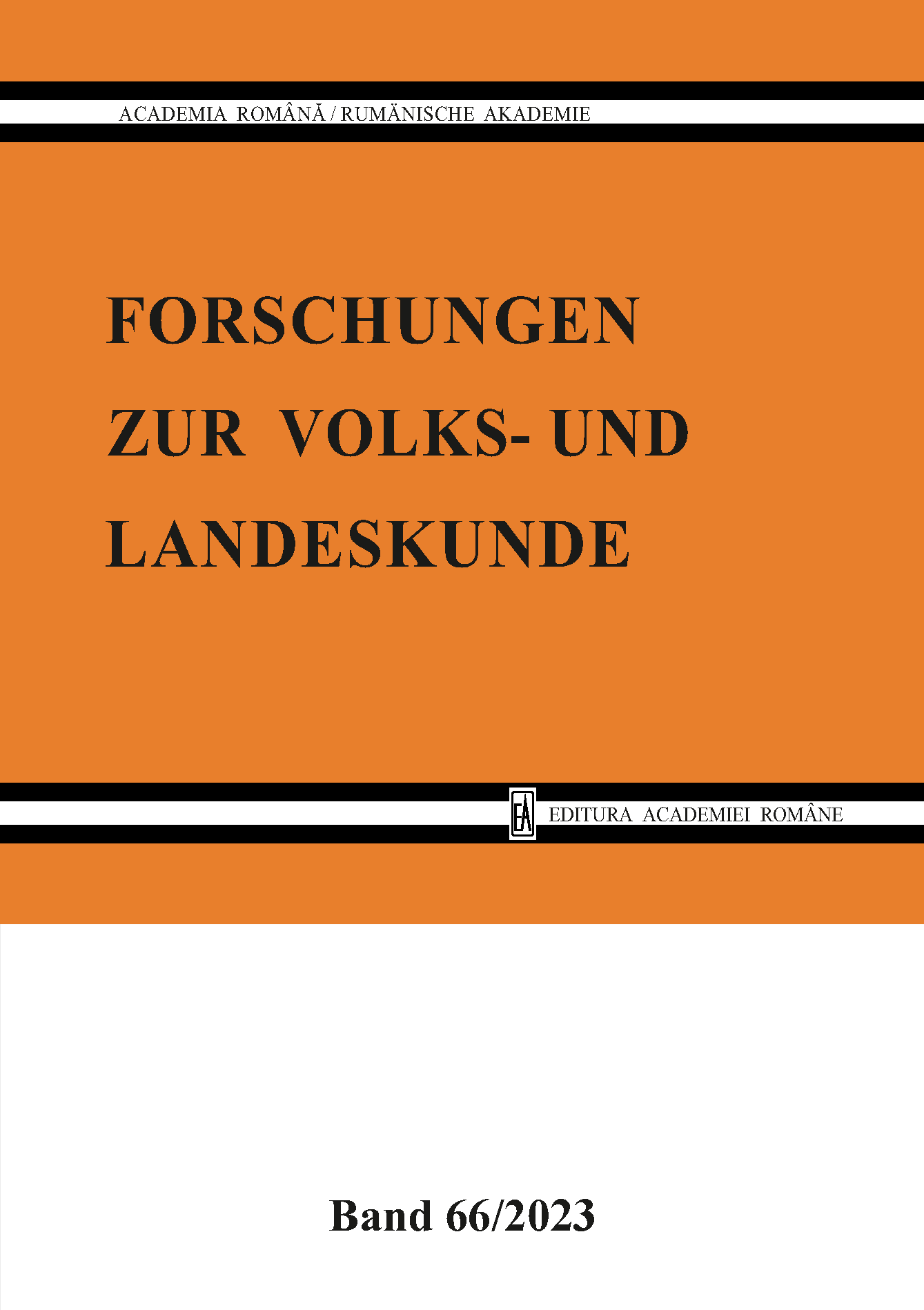DER ZERBROCHENE TURM VON BOIȚA (KREIS SIBIU) IN HISTORISCHEN BILDERN UND ARCHÄOLOGISCHEN ENTDECKUNGEN
Turnul Spart from Boița (Sibiu County) in Historical Images and Archaeological Discoveries
Author(s): Claudia UrduziaSubject(s): History, Archaeology, 16th Century, 17th Century
Published by: Editura Academiei Române
Keywords: Turnul Spart; Boița; tower; collapsed tower; 16th century; border; custom point; road; harquebus; mortar;
Summary/Abstract: Being an easy pass over the Carpathians, in the Middle Ages in times of peace, the valley of the river Olt was the most important trade route of Sibiu with Wallachia and further along with the Balkans. But it was also an easy access towards Sibiu in case of war, for which reason, besides a border point (the fortress from Turnu Roșu), the area was fortified with other fortresses as well, such as Landskrone in Tălmaciu, the strongholds in Tălmăcel and Lotrioara and a tower at the confluence of the Megieș brook and the Olt river. The current national road DN 7, going through the pass today, was the object of enlargement works in 2015, which gave us the opportunity to research the tower in the valley of the Megieș brook. The site is better known today as Turnul Spart [Broken Tower] and it stands on a narrow strip of sand and gravel between the river Olt and the national road DN 7. The tower was an outpost of the custom point from Turnu Roșu. According to old documents, it was built in the summer of 1503. The ensemble also included a stone wall which closed the valley. It started on the slope of the mountain and ended up near the water and had an arched opening where the road was. Half of the tower fell down in 1533 during a high flood of the Olt river, but the other half still stands, as well as a fragment of the wall closing the valley. Old images of the area (paintings and photographs) show these ruins and their slight alterations and decays over the last two centuries. The archaeological research in 2015 led to the discovery of the fallen half of the tower and also of a circular enclosure contemporary with the tower. The fallen half is overlapped by the foundation of the ruined house of the road caretaker. The enclosure made out of stone possibly supported an earth bank (which could not be observed during the research). In the debris of the tower two harquebuses were found dating from the second half of the 15th century and the beginning of the 16th. A bronze mortar was also found wearing the year 1516 embossed. Smaller iron items were also found.The research found no traces of burning linked to the tower and no materials dating after the 16th century. The abandonment of valuable items of the era and the later impossibility of recovering them as well as the lack of human remains suggest that the old documents were accurate and that the tower was indeed destroyed by the waters of the river, which also covered the debris in alluviums.
Journal: Forschungen zur Volks- und Landeskunde
- Issue Year: 2023
- Issue No: 66
- Page Range: 37-54
- Page Count: 18
- Language: German
- Content File-PDF

